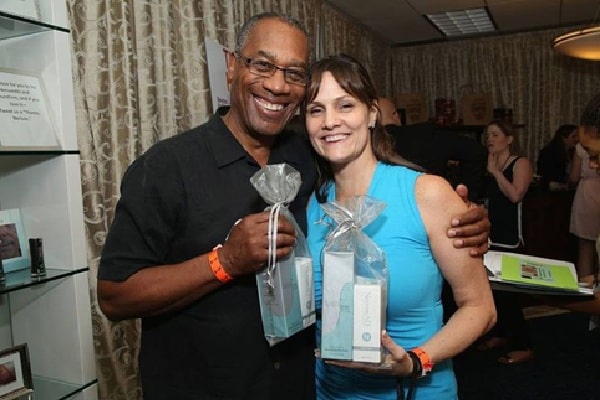Ever wondered who’s behind the stunning worlds you see on screen — the intricate sets, the timeless designs, the magic that makes every film feel so alive? Meet Nora Chavooshian — a name that might not be splashed across billboards, but one that’s deeply respected in Hollywood and beyond.
Born on October 25, 1953, in Philadelphia, Pennsylvania, Nora is a renowned production designer, set decorator, and sculptor. Her work on cult classics like The Beastmaster (1982), After Hours (1985), Matewan (1987), and Eight Men Out (1988) left a lasting impression on American cinema.
But Nora’s story isn’t just about art — it’s about balance, resilience, and redefining success as both a creative powerhouse and a devoted mother. Let’s dive into her inspiring journey and discover what makes her legacy so extraordinary.
1. Early Life and Creative Roots
Growing up in Philadelphia, Nora was surrounded by art, music, and cultural expression. Her Armenian-American heritage gave her a deep appreciation for storytelling and craftsmanship. From an early age, she showed a natural curiosity about how spaces could shape emotions — a spark that would eventually light her path to Hollywood.
Her upbringing taught her to see the beauty in details — the curve of a sculpture, the texture of fabric, the way light hits a room. These small observations became the foundation of her career in design and sculpture.
2. Education and Artistic Formation
Nora’s academic journey in the arts helped her develop both technical mastery and creative discipline. She pursued formal studies in design and sculpture, immersing herself in the theory and practice of visual storytelling.
During her student years, she became fascinated with set design — realizing that film offered a space where architecture, art, and emotion could coexist. It wasn’t long before she started experimenting with building miniature sets and designing story spaces that would later shape her signature style.
3. The Leap to Hollywood
Breaking into the film industry isn’t easy, especially for women in the late 1970s. But Nora’s determination and talent helped her stand out. Her early work as a production designer and set decorator in independent and low-budget films caught the attention of directors looking for fresh, imaginative voices.
Her breakthrough came in the early 1980s, a time when visual storytelling was rapidly evolving. Nora’s eye for atmosphere and authenticity made her a go-to designer for projects that demanded both creativity and emotional depth.
4. The Films That Defined Her Career
The Beastmaster (1982)
Nora’s first major credit, The Beastmaster, was a fantasy-adventure film that relied heavily on visual world-building. Her designs created a vivid, otherworldly realm that became one of the film’s most celebrated features.
After Hours (1985)
Working with Martin Scorsese on this darkly comedic masterpiece was a career-defining moment. Her ability to design surreal, chaotic, yet believable New York interiors brought the film’s offbeat tone to life.
Matewan (1987) and Eight Men Out (1988)
These two historical dramas showcased Nora’s gift for authenticity. Her designs captured the spirit of early 20th-century America — gritty, grounded, and emotionally rich. Both films earned critical acclaim and cemented her reputation as one of Hollywood’s most meticulous production designers.
5. A Sculptor at Heart
While Nora made her mark in cinema, sculpture remained her first love. Her artwork often draws from cultural heritage, personal reflection, and symbolism, blending modern techniques with timeless themes.
Over the years, her sculptures have appeared in galleries and exhibitions, earning praise for their emotional resonance and storytelling depth. This dual identity — as a production designer and sculptor — defines her as an artist who transcends boundaries.
6. Love, Family, and Life with Joe Morton
In 1984, Nora married Joe Morton, the award-winning actor best known for roles in Scandal, Terminator 2: Judgment Day, and The Brother from Another Planet. Their marriage represented a powerful meeting of creative minds — one behind the camera, one in front of it.
Together, they welcomed three children — Hopi, Seta, and Ara Morton — and built a family grounded in love, respect, and artistic freedom.
Despite the demands of Hollywood, Nora prioritized family, showing that you can balance career success and motherhood with grace. Although the couple divorced in 2006, they remained dedicated co-parents and continued to support one another’s careers.
7. Balancing Motherhood and Art
Raising children while working in the high-pressure film industry isn’t easy, but Nora handled it with strength and sensitivity. Her children often describe her as “the creative heartbeat” of their home — someone who taught them to dream boldly and work passionately.
Nora’s ability to juggle production deadlines, artistic pursuits, and family life reflects her resilience. Her story serves as a reminder that creativity doesn’t have to come at the cost of family — it can thrive alongside it.
8. A Signature Artistic Vision
What makes Nora Chavooshian’s work instantly recognizable is her attention to detail, texture, and emotion. Whether designing a film set or sculpting a piece of art, she approaches her craft as a storyteller.
Her background in sculpture gives her set designs a tangible realism — every prop, wall, and corner feels lived-in and full of meaning. She once said that “spaces are silent characters,” and her work perfectly embodies that philosophy.
Also Read : Who is Luke Rubenfeld? Brother of Paul Reubens & Dog Expert
9. Collaborations and Influence
Nora’s collaborations with legendary filmmakers like Martin Scorsese and John Sayles helped bring cinematic visions to life. She was known on set for her calm leadership, problem-solving skills, and deep understanding of how visuals influence narrative tone.
Her career also inspired many young women to pursue film production design — a field once dominated by men. Through her example, she showed that creativity and persistence can break any barrier.
10. Legacy, Privacy, and Lasting Impact
Even after decades in the industry, Nora Chavooshian has remained grounded and private. She continues to create, sculpt, and explore new forms of visual expression. Her body of work — from After Hours to her sculptural exhibitions — speaks volumes about her talent and vision.
Her legacy isn’t just about the films she helped design, but about the emotional depth she brought to every project. In a world driven by fame and fast trends, Nora stands as a timeless reminder that true artistry comes from authenticity.
Conclusion
Nora Chavooshian’s story is more than a résumé of achievements — it’s a celebration of artistry, perseverance, and quiet strength. From her humble beginnings in Philadelphia to shaping iconic cinematic worlds and sculptures, she’s lived a life fueled by creativity and compassion.
Balancing fame, family, and personal expression, Nora remains a powerful example for anyone chasing their artistic dreams. Whether you know her from After Hours or from her sculptures, one thing is clear — her art speaks the language of the soul.
FAQs
1. Who is Nora Chavooshian?
She’s an American production designer, set decorator, and sculptor known for her work on The Beastmaster, After Hours, and Matewan.
2. When and where was she born?
Nora was born on October 25, 1953, in Philadelphia, Pennsylvania.
3. Who was she married to?
She was married to actor Joe Morton from 1984 to 2006.
4. How many children does she have?
Nora and Joe have three children — Hopi, Seta, and Ara Morton.
5. What is her artistic legacy?
Her legacy spans film and sculpture, celebrated for emotional storytelling, detailed production design, and her influence on women in the arts.

